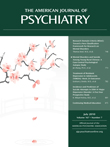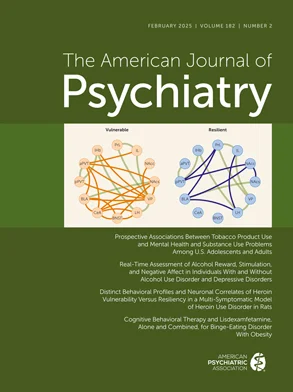Melancholia, a syndrome with a long history and distinctly specific psychopathological features, is inadequately differentiated from major depression by the DSM-IV specifier. It is neglected in clinical assessment (e.g., in STAR*D [
1]) and treatment selection (e.g., in the Texas Medication Algorithm Project [
2]). Nevertheless, it possesses a distinctive biological homogeneity in clinical experience and laboratory test markers, and it is differentially responsive to specific treatment interventions. It therefore deserves recognition as a separate identifiable mood disorder.
Melancholia has been variously described as "endogenous," "endogenomorphic," "autonomous," "type A," "psychotic," and "typical" depression (
3–
6). In contrast to the current DSM criteria for the melancholia specifier (features of which are often shared with major depression), it has characteristic clinical features (
5–
7).
Clinical Features
1. Disturbances in affect disproportionate to stressors, marked by unremitting apprehension and morbid statements, blunted emotional response, nonreactive mood, and pervasive anhedonia—with such features continuing autonomously despite any improved circumstances. The risks for recurrence and for suicide are high.
2. Psychomotor disturbance expressed as retardation (i.e., slowed thought, movement, and speech, anergia) or as spontaneous agitation (i.e., motor restlessness and stereotypic movements and speech).
3. Cognitive impairment with reduced concentration and working memory.
4. Vegetative dysfunction manifested as interrupted sleep, loss of appetite and weight, reduced libido, and diurnal variation—with mood and energy generally worse in the morning.
5. Although psychosis is not necessarily a feature, it is often present. Nihilistic convictions of hopelessness, guilt, sin, ruin, or disease are common psychotic themes.
Biological Changes
Several biological changes occur more frequently in melancholia than in other forms of depressive illness. Three indicative markers are known.
1.
Hypercortisolemia, reflected in the dexamethasone suppression test (DST). It is common in melancholia and relatively uncommon in nonmelancholic mood disorders (
6).
2.
Psychomotor disturbance measurable by the CORE scale (
5), with CORE scores demonstrating a linear relationship with DST nonsuppression rates (
8).
3. Characteristic
disturbances in sleep architecture, with reduced REM latency, increased REM time, and reduced deep sleep (
9).
Treatment
Melancholic patients respond better to broad-action tricyclic antidepressants than to narrow-action antidepressants (e.g., serotonin uptake inhibitors) (
10). They respond well to ECT (
11). In comparison to those with nonmelancholic mood disorders, melancholic patients rarely respond to placebos, psychotherapies, or social interventions (
12).
Conclusions
Melancholia is a lifetime diagnosis, typically with recurrent episodes (
5,
6,
13,
14). Within the present classification it is frequently seen in severely ill patients with major depression and with bipolar disorder. Melancholia's features cluster with greater consistency than the broad heterogeneity of the disorders and conditions included in major depression and bipolar disorder. The melancholia diagnosis has superior predictive validity for prognosis and treatment, and it represents a more homogeneous category for research study.
We therefore advocate that melancholia be positioned as a distinct, identifiable and specifically treatable affective syndrome in the DSM-5 classification.

